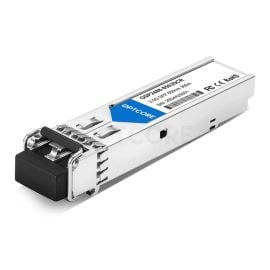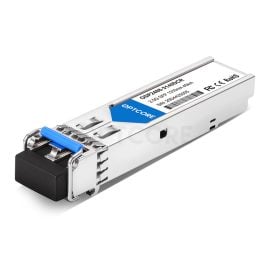-
×
 Optcore 2.5G Multi-mode 850nm 300m SR SFP Transceiver
1 × US$ 17.00
Optcore 2.5G Multi-mode 850nm 300m SR SFP Transceiver
1 × US$ 17.00
Blog, Network Cabling
What is 2.5 Gigabit Ethernet? A Beginner Guide
In recent years, there has been a significant increase in network demand for data centers, enterprises, hospitals, businesses, government agencies, and schools. This demand has been further amplified by the widespread adoption of the WIFI 5 (802.11ac) and WIFI 6 (802.11ax) standards. Therefore, many Internet Service Providers (ISP) and enterprises upgrade the Legacy Gigabit Ethernet to a higher 2.5 Gigabit Ethernet or even 10 Gigabit Ethernet. In this article, we will focus on 2.5G Ethernet and hope to provide a valuable guide to beginners.
What is 2.5 Gigabit Ethernet
2.5 Gigabit Ethernet is an upgraded version of Gigabit Ethernet (GbE). It supports 2.5 times the speed of regular Gigabit Ethernet (1GbE), providing enhanced network performance and productivity. The most popular variants, 2.5GBASE-T and 5GBASE-T, are defined by the IEEE 802.3bz standard and TIA TSB-5021.
The 2.5G Ethernet still uses the regular Cat5e or Cat6 existing cabling but provides significantly 2.5Gbps faster data transfer speeds than traditional Gigabit Ethernet. That means substantially improving network performance without needing rewiring or significant infrastructure changes.
systems.
Recommended products
1G vs. 2.5G vs. 5G vs. 10G Ethernet
Ethernet technology has evolved significantly over the years, offering a range of speeds to meet different networking needs. Here’s a detailed comparison of 1G, 2.5G, 5G, and 10G Ethernet:
| Feature | 1G Ethernet | 2.5G Ethernet | 5G Ethernet | 10G Ethernet |
|---|---|---|---|---|
| Bandwidth | 1,000 Mbps | 2,500 Mbps | 5,000 Mbps | 10,000 Mbps |
| Compatibility | Widely supported | Backward compatible with 1G | Backward compatible with 1G and 2.5G | Requires specific hardware, not backward compatible with lower speeds |
| Cost | Most affordable | Moderate | Higher than 2.5G | Most expensive |
| Use Cases | General use, basic networking | Enhanced performance for gaming, streaming, and NAS | High-performance applications, advanced gaming, and streaming | Data centers, enterprise networks, high-demand applications |
Bandwidth
- 1G Ethernet: Offers a maximum bandwidth of 1,000 Mbps, suitable for general networking needs like web browsing, email, and basic file transfers.
- 2.5G Ethernet: Provides 2,500 Mbps, which is ideal for more demanding applications such as gaming, 4K streaming, and faster file transfers.
- 5G Ethernet: Offers 5,000 Mbps, supporting even higher bandwidth applications and more robust network performance.
- 10G Ethernet: Delivers 10,000 Mbps, making it suitable for data centers, enterprise networks, and applications requiring the highest bandwidth and lowest latency.
Compatibility
- 1G Ethernet: Universally supported by most devices and network infrastructure.
- 2.5G and 5G Ethernet: Both are backward compatible with 1G Ethernet, allowing seamless integration with existing networks. However, they require specific hardware support to achieve their maximum speeds.
- 10G Ethernet: Requires dedicated hardware and is not backward compatible with 1G or 2.5G Ethernet without additional equipment like media converters or specific switches.
Cost
- 1G Ethernet: The most affordable option due to its widespread adoption and mature technology.
- 2.5G and 5G Ethernet: These are more expensive than 1G but offer a balance between cost and performance. Prices are expected to decrease as the technology becomes more prevalent.
- 10G Ethernet: The most expensive due to the advanced technology and specialized hardware required. It is typically used in high-performance environments where cost is justified by the need for maximum speed and reliability.
Use Cases
- 1G Ethernet: Suitable for general home and office use, including web browsing, email, and basic file sharing.
- 2.5G Ethernet: Ideal for users who need more bandwidth for activities like gaming, 4K video streaming, and faster file transfers to Network-Attached Storage (NAS) systems.
- 5G Ethernet: Supports high-performance applications, advanced gaming, and streaming, providing a significant performance boost over 2.5G Ethernet.
- 10G Ethernet: Best suited for data centers, enterprise networks, and other environments that require the highest possible data transfer rates and minimal latency.
Future-Proofing
Choosing between these Ethernet speeds depends on your current needs and future plans:
- 10G Ethernet: Ideal for those who need the highest performance and are willing to invest in the necessary infrastructure.
- 1G Ethernet: Sufficient for most current applications but may become a bottleneck as data demands increase.
- 2.5G and 5G Ethernet: Offer a good balance between performance and cost, providing future-proofing for increasing data demands without the high cost of 10G Ethernet.
FAQ
Q: Will a 2.5G Ethernet switch improve my internet speed?
A: A 2.5G Ethernet switch can sometimes improve your internet speed, especially if your current network infrastructure is a bottleneck. Upgrading to a 2.5G switch can allow faster inter-device communication (NAS and computer) within your local network. However, if your internet speed is lower than the capabilities of the 2.5G switch, you may not see a speed improvement.
Q: Is 2.5G overkill for gaming?
A: For most players, 2.5G is more than sufficient, especially when downloading big game files and streaming smoothly, even though a direct wired connection is still ideal for competitive gaming.
Q: Do I need to change my Ethernet cable to 2.5G?
A: When upgrading to 2.5 G Ethernet, you don’t usually need to replace your Ethernet cable. Because 2.5G Ethernet supports Cat5e or Cat6 cables, your existing cable may already support the higher speed. However, Cat6 might be a safer option if you require very long runs.
Q: Can I get 2.5G from my Cat5e cable?
A: Yes, you can generally achieve 2.5G speeds using a Cat5e cable. However, you should consider cable quality, length, and equipment compatibility.
Conclusion
For users who want to use the existing Cat5e or Cat6 cabling, 2.5 Gigabit Ethernet provides a practical choice for upgrading to gigabit Ethernet while still having a lower total cost. If you are ready for the faster 10GBase-T ethernet and have enough budget, that will be the better choice.

 Español
Español 日本語
日本語 Français
Français Deutsch
Deutsch








